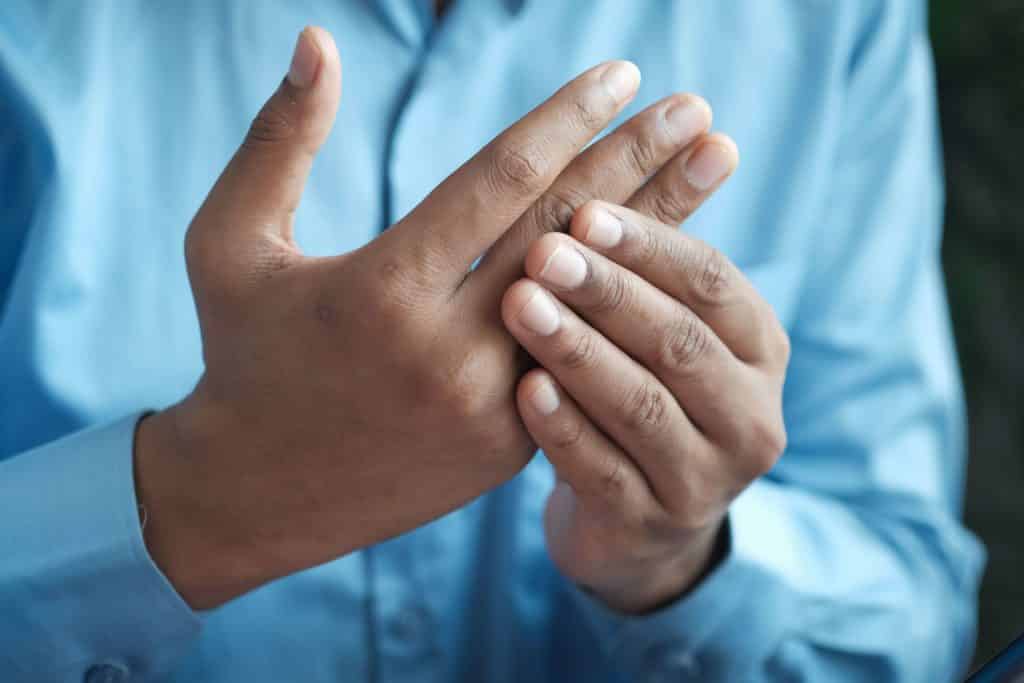What exactly is Arthritis?
Around 200 distinct forms of musculoskeletal disorders exist. The term “arthritis” (from the Greek ‘arthro’, which means joint, and ‘itis,’ which means inflammation) refers to various diseases with various forms and symptoms. Arthritis is a disorder characterized by swelling and inflammation of the joints, resulting in discomfort and limited mobility. The deterioration of the cartilage in the joints causes pain in osteoarthritis (OA). Rheumatoid Arthritis (RA) is an autoimmune illness in which the body’s immune system targets its organs (joints, bones, and internal organs).
Osteoarthritis (OA) is a disease that affects one or more joints, causing cartilage loss, inflammation, discomfort, stiffness, and difficulty moving the joint. Osteoarthritis is the most prevalent kind of Arthritis, and it becomes more frequent as people become older. It may affect any joint, although the hips, knees, spine, and hands are the most often affected.
Corrosion of the tissue lining the joints (synovium) develops in rheumatoid Arthritis (RA). In extreme situations, various bodily tissues may become inflamed. RA causes bone and cartilage degeneration and discomfort, stiffness, and limits in joint range of motion.
What are the causes of Arthritis?
Arthritis may be caused by a variety of hereditary and environmental causes. Many types of Arthritis are congenital, meaning they are handed down from generation to generation. An overactive immune system causes inflammatory Arthritis, whereas metabolic imbalances cause metabolic Arthritis.
Environmental factors, such as disease or injury, may induce Arthritis if a genetic susceptibility is present. A bacterial, viral, or fungal infection, for example, may cause various kinds of Arthritis. Age-related “wear and tear” or a past injury are the most prevalent causes of osteoarthritis.
In the simplest terms, Arthritis is caused by a breakdown in cartilage accompanied by inflammation. When the pressure to a joint is applied, cartilage protects it and allows for smooth movement by absorbing stress. The bones rub together when there isn’t enough cartilage, causing discomfort, swelling (inflammation), and stiffness.
Several factors: may cause inflammation of the joints.
- Infections of the bones (usually caused by bacteria or viruses)
- an autoimmune condition (where the immune system attacks the body itself)
- joint “wear and tear” in general
Once the damage has healed, the sickness has been treated, or the infection has been removed, the inflammation fades typically away. However, in unavoidable accidents and disorders, the inflammation persists, or the cartilage is damaged, resulting in long-term discomfort and deformity. Chronic Arthritis is the term for when this occurs.
Types of Arthritis
There are numerous types of Arthritis; some of them are:
- Osteoarthritis.
- Rheumatoid Arthritis.
- Childhood arthritis.
- Spondyloarthropathies.
- Lupus erythematosus.
- Gout.
- Infectious and reactive Arthritis.
- Psoriatic Arthritis.
But the three most common Arthritis are:
Osteoarthritis
Osteoarthritis is the most prevalent kind of Arthritis. It is a chronic disorder where the cartilage between the bones that cushions the joints wears away, producing pain, stiffness, swelling, and restricted joint mobility. Though it may affect practically every joint in the body, it usually affects the hands, knees, hips, feet, and spine.
Rheumatoid Arthritis
Rheumatoid Arthritis (RA) is a chronic autoimmune disease marked by joint swelling, stiffness, and discomfort. Skin, heart, lungs, and eyes may all be affected. Because it involves both sides of the body, it differs from other types of Arthritis.
Psoriatic Arthritis
Psoriatic Arthritis is inflammatory Arthritis that may occur in persons who have psoriasis, a chronic autoimmune skin illness characterized by rapid skin cell growth and renewal. Any joint may be affected, but important joints in the lower extremities, such as the knees and ankles, are usually affected.
Symptoms of Arthritis
The predominant symptom of most kinds of Arthritis is joint pain. Certain types of Arthritis have symmetrical effects on the joints (on both sides of the body). Movement and weight carrying worsen pain in certain kinds of Arthritis, while rest relieves it.
The following are some of the symptoms of Arthritis in the joints:
- Pain\Stiffness
- Swelling
- Tenderness
- Redness
- Warmth
- Reduced mobility, range of motion, or flexibility
Other symptoms that may accompany joint discomfort, depending on the kind of Arthritis, include:
- Weakness
- Loss of weight
- Fever
- Fatigue/tiredness
- Migraines are a kind of headache.
- Hands and feet numbness or tingling
- Depression
- Anxiety
- Problems with sleep
- Thinking, memory, and focus issues
- Face or jaw pain, such as temporomandibular joint condition (TMJ)
- Irritable bowel syndrome, stomach discomfort, bloating, constipation, and other digestive problems (IBS)
When it comes to Arthritis, who is at risk?
Arthritis may affect people of different ages, genders, and ethnicities. Arthritis affects more than 50 million people and 300,000 children worldwide.
Women are more likely to get rheumatoid Arthritis, while males are more likely to develop metabolic Arthritis, such as gout. Most kinds of Arthritis grow at risk as people become older. A family history of Arthritis, a past joint injury, and obesity are all risk factors.
Arthritis diagnosis
It’s essential to speak with your doctor about your symptoms if you believe you have a kind of Arthritis and have been suffering joint or muscle discomfort. Getting a diagnosis as soon as feasible allows therapy to begin as quickly as possible. You will get the most remarkable results if you seek treatment quickly. Because treatment, particularly medication, varies greatly depending on the kind of Arthritis you have, having a precise diagnosis ensures you get the best possible care. Because there are so many different varieties of Arthritis, your doctor may do various tests and examinations to determine which one you have:
- A medical history will include learning about your symptoms, family history, and any previous health issues you’ve had.
- Physical examination – your doctor will examine your joints for redness and swelling in and around the joint and their range of motion. Depending on the kind of Arthritis you have, your doctor may check for rashes, examine your eyes and throat, and take your temperature.
- Scans and other testing — blood tests to screen for levels of inflammation in your blood or specific genetic markers may be ordered depending on the kind of Arthritis your doctor suspects you have. X-rays, ultrasound, CT (computed tomography), and MRI (magnetic resonance imaging) may be used to understand better what’s going on within your joints.
Referral to a specialist: If necessary, your doctor will refer you to a specialist, most often a rheumatologist, for diagnosis and treatment of your problem.


